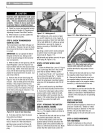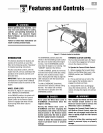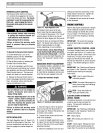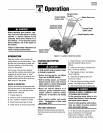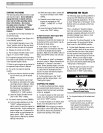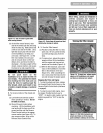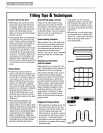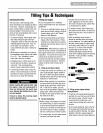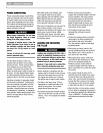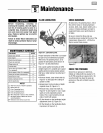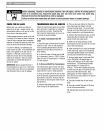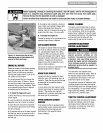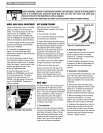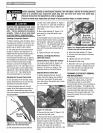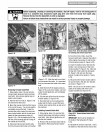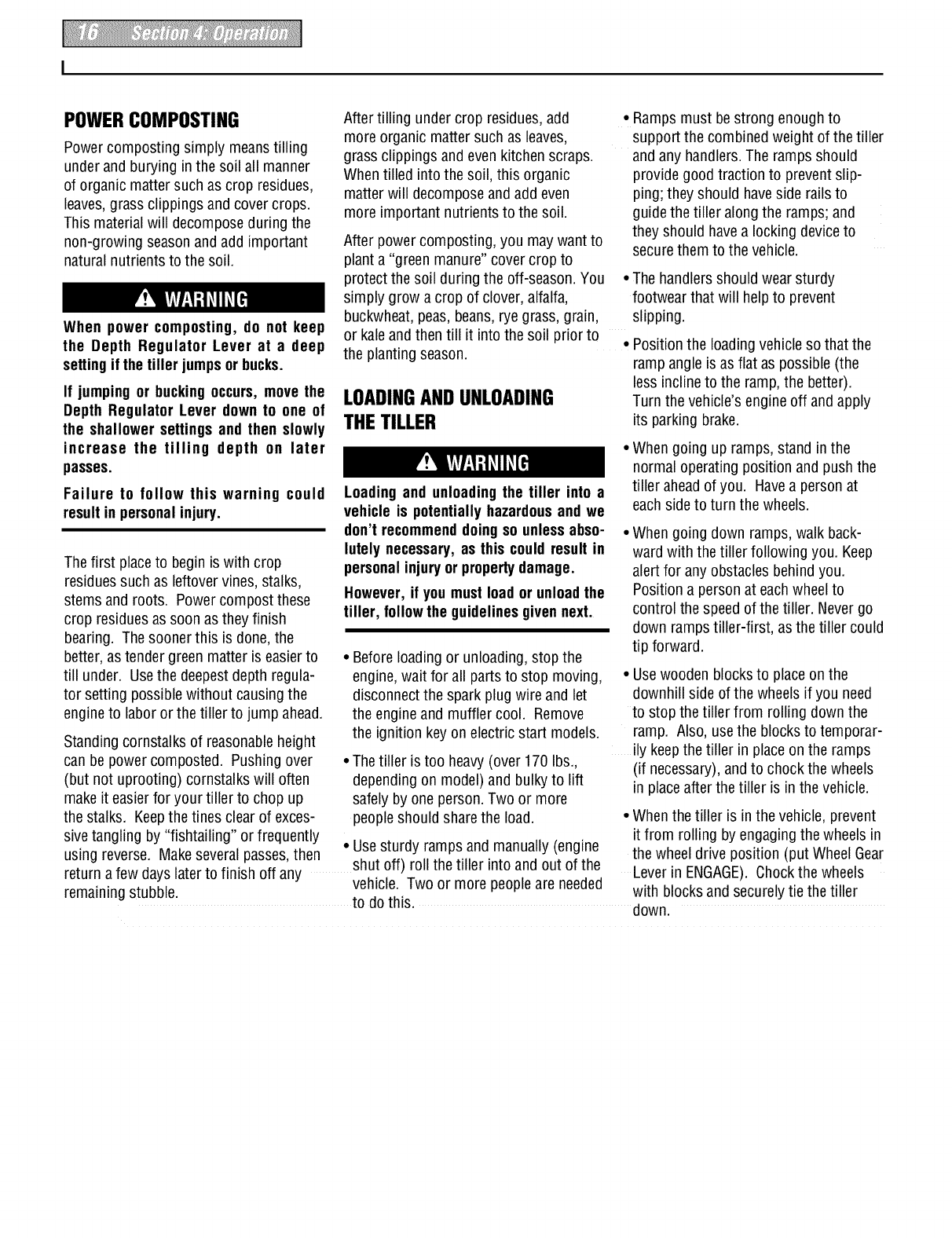
POWERCOMPOSTING
Powercomposting simply meanstilling
under and burying in the soil all manner
of organic mattersuch ascrop residues,
leaves,grass clippings and cover crops.
This material will decomposeduring the
non-growing season andadd important
naturalnutrients to the soil.
When power composting, do not keep
the Depth Regulator Lever at a deep
settingif thetiller jumpsor bucks.
If jumping or buckingoccurs, movethe
Depth Regulator Lever downto one of
the shallower settings and then slowly
increase the tilling depth on later
passes.
Failure to follow this warning could
resultin personalinjury.
Thefirst placeto begin is with crop
residuessuch as leftovervines, stalks,
stems and roots. Powercompost these
crop residues assoon as they finish
bearing. Thesooner this is done,the
better,astender green matter is easierto
till under. Usethe deepestdepth regula-
tor setting possiblewithout causing the
engine to labor orthe tiller to jump ahead.
Standingcornstalks of reasonableheight
can be power composted. Pushing over
(but not uprooting) cornstalks will often
makeit easierfor your tiller to chop up
the stalks. Keepthe tines clear of exces-
sive tangling by "fishtailing" or frequently
using reverse. Makeseveral passes,then
return afew days laterto finish off any
remainingstubble.
After tilling under crop residues,add
more organic matter such as leaves,
grass clippings and evenkitchen scraps.
Whentilled into the soil, this organic
matter will decomposeandadd even
more important nutrients to the soil.
After power composting, you may want to
planta "green manure" cover crop to
protect the soil during the off-season.You • The handlersshould wearsturdy
simply grow a crop of clover, alfalfa, footwear that will help to prevent
buckwheat,peas, beans,ryegrass, grain, slipping.
or kaleand then till it into the soil prior to
• Position the loadingvehicle so that the
the plantingseason.
ramp angle isas flat aspossible (the
less incline to the ramp, the better).
LOADINGAND UNLOADING Turnthe vehicle's engine off and apply
THETILLER its parking brake.
Loading and unloading the tiller into a
vehicle is potentially hazardousand we
don't recommenddoingso unlessabso-
lutely necessary,as this could result in
personalinjuryor propertydamage.
However, if you must loador unloadthe
tiller, followthe guidelinesgivennext.
• Beforeloading or unloading,stop the
engine,wait for all partsto stop moving,
disconnectthe spark plug wire and let
the engine and muffler cool. Remove
the ignition key on electric start models.
• The tiller is too heavy(over 170 Ibs.,
dependingon model) and bulkyto lift
safely by one person.Two or more
peopleshould sharethe load.
• Usesturdy ramps and manually (engine
shut off) roll thetiller into and out of the
vehicle. Two or more peopleare needed
• Ramps must bestrong enough to
support the combined weight ofthe tiller
and any handlers.The ramps should
provide good traction to prevent slip-
ping; they should haveside rails to
guidethe tiller along the ramps;and
they should havea locking deviceto
securethem to the vehicle.
• When going up ramps,stand in the
normal operating position and push the
tiller aheadof you. Havea personat
eachsideto turn the wheels.
• When going down ramps, walk back-
ward with thetiller following you. Keep
alertfor any obstaclesbehind you.
Position a personat eachwheel to
control the speedof the tiller. Nevergo
down ramps tiller-first, as thetiller could
tip forward.
• Usewooden blocksto placeon the
downhill side of the wheels if you need
to stop the tiller from rolling down the
ramp. Also,use the blocksto temporar-
ily keepthetiller in placeon the ramps
(if necessary),and to chock the wheels
in placeafter the tiller is in the vehicle.
• When thetiller is in the vehicle, prevent
it from rolling byengagingthe wheels in
the wheel drive position (put Wheel Gear
Leverin ENGAGE).Chockthe wheels
with blocks and securelytie thetiller
to do this. down.



